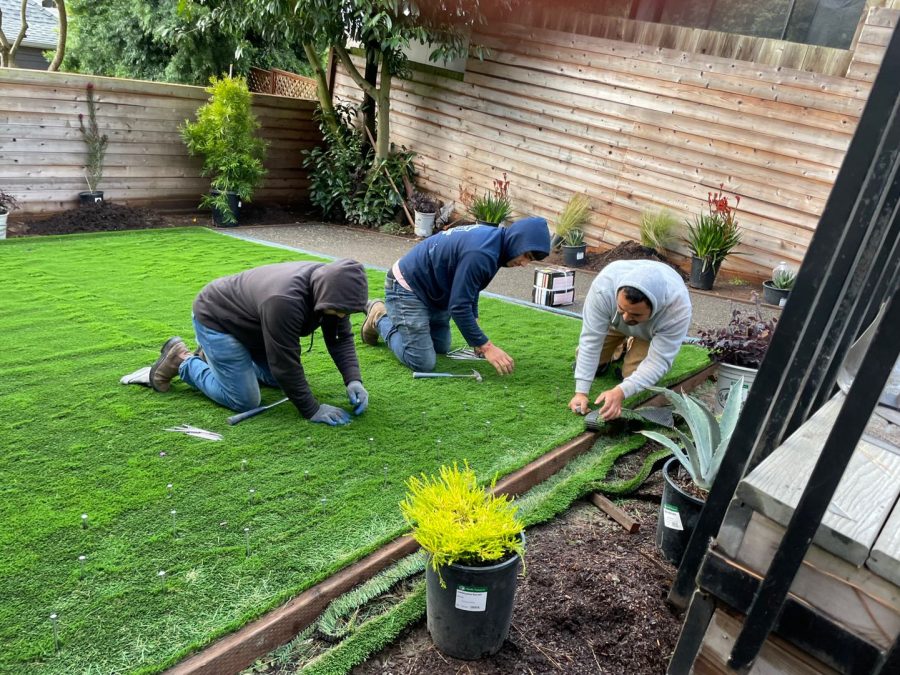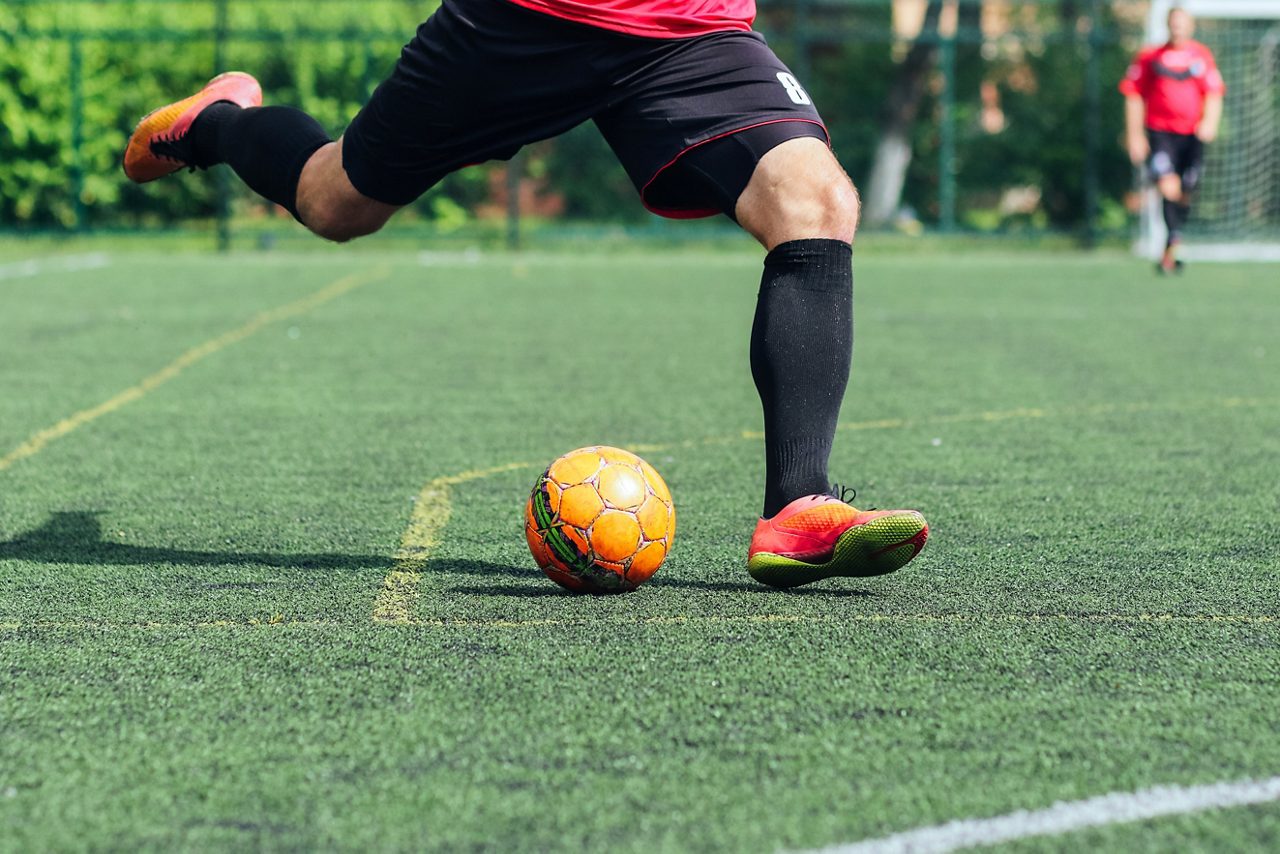Weather-Resistant Arizona Artificial Turf for Home and Business Applications
Weather-Resistant Arizona Artificial Turf for Home and Business Applications
Blog Article
See Why Homeowners Prefer Artificial Grass for Sustainable Landscape Design Practices
As house owners increasingly focus on sustainability in landscape design, synthetic lawn has become an engaging alternative to conventional yard. Its capacity to preserve water, reduce upkeep efforts, and reduce ecological influence positions it as a practical choice for those looking for environmentally friendly services. The aesthetic allure and adaptability of artificial turf cater to varied style choices. Nevertheless, the effects of this shift prolong beyond mere ease and aesthetic appeals, motivating a better examination of how these choices influence broader environmental outcomes. What remains to be checked out is the full extent of benefits that synthetic grass can provide to homeowners and the setting alike.
Water Preservation Perks
One of the most significant benefits of fabricated grass is its duty in water preservation. In comparison, synthetic grass removes this need completely, as it does not require watering.
Moreover, the setup of artificial lawn can add to a more sustainable landscape. Home owners can dramatically lower their water expenses, permitting reallocation of sources to various other environmental initiatives or household usages. Additionally, synthetic turf is created to hold up against different climatic conditions without the demand for supplementary watering, making it an ideal selection for regions facing water shortage.
The environmental advantages expand past prompt water financial savings. By decreasing water intake, synthetic grass aids to reduce the influences of climate adjustment, protecting important environments that are threatened by extreme water extraction. As sustainable landscaping practices obtain traction, synthetic grass becomes an accountable choice for home owners seeking to produce eco-friendly outside areas.
Decreased Maintenance Efforts
Man-made lawn dramatically lowers upkeep initiatives contrasted to conventional yard yards. With man-made lawn, property owners can get rid of the taxing tasks connected with all-natural landscape design, such as mowing, fertilizing, and weeding. This not only conserves valuable time but also minimizes physical labor, making yard care obtainable for individuals of any ages.
Typical lawns need regular cutting to maintain a visually pleasing height, whereas fabricated lawn remains consistently lavish without the demand for reducing. Furthermore, home owners no longer require to apply fertilizers or chemicals, which are commonly needed to maintain natural grass healthy.
Furthermore, synthetic grass is durable and resilient, needing minimal maintenance past periodic cleaning and washing to eliminate particles. This ease of maintenance enables home owners to enjoy their outdoor spaces without the consistent fear of upkeep, offering more time for recreation and household tasks. Ultimately, the minimized maintenance efforts linked with synthetic grass make it an appealing choice for those looking for a low-maintenance, visually appealing landscape.

Ecological Influence Reduction
There is a growing recognition of the ecological benefits connected with synthetic grass, specifically in terms of water preservation and reduced chemical use. Traditional lawns need considerable quantities of water, specifically in drought-prone regions, resulting in raised stress on local water resources. In contrast, man-made lawn gets rid of the requirement for irrigation, drastically lowering water consumption and promoting sustainability.
Furthermore, conventional grass upkeep frequently entails the application of plant foods, herbicides, and chemicals, which can add to soil and water contamination. Man-made grass reduces this ecological threat by needing very little maintenance and virtually eliminating the demand for damaging chemicals. This not just boosts soil health but additionally shields local ecosystems from hazardous runoff.
Moreover, the manufacturing of check that natural yard lawns normally involves using nonrenewable fuel sources for trimming and landscape design equipment, additional contributing to greenhouse gas emissions. By selecting synthetic lawn, house owners can considerably lower their carbon footprint linked with lawn care activities.
Visual Appeal and Flexibility
In addition to its ecological benefits, artificial lawn supplies significant aesthetic charm and versatility for landscaping. Homeowners can achieve a lavish, environment-friendly appearance year-round, getting rid of the seasonal fluctuations generally related to natural turf. This regular aesthetic not just improves the visual charm of a residential or commercial property however additionally adds to a refined and well-maintained look.
Moreover, synthetic grass is offered in a variety of colors, designs, and structures, enabling customization to suit private preferences and design styles - Artificial turf companies phoenix. Whether made use of in residential gardens, commercial spaces, or recreational locations, it can effortlessly incorporate into varied landscaping styles, from contemporary minimalist to rich exotic setups
The flexibility of synthetic grass prolongs past plain appearance; it can be installed in various areas, consisting of rooftops, patios, and also interior spaces, creating opportunities for unique landscaping remedies. Additionally, it is suitable for a variety of activities, from children's play locations to pet-friendly environments, offering performance without jeopardizing design.
Eventually, the visual allure and versatility of synthetic grass make it an appealing choice for home owners looking for lasting landscaping services that do not sacrifice beauty for environmental responsibility.

Long-Term Expense Savings
One of the most compelling benefits of fabricated grass is its possibility for long-term price savings. Unlike natural lawn, which requires regular upkeep-- consisting of mowing, watering, fertilizing, and insect control-- man-made lawn considerably decreases these ongoing expenses.
Furthermore, fabricated lawn has a life expectancy of 15 to 25 years, relying on its quality and use. This longevity minimizes substitute expenses, making it a much more cost-effective choice in the lengthy run. Moreover, the initial financial investment in synthetic grass can typically be recouped through Web Site the financial savings accrued gradually.
While the ahead of time expense may seem greater contrasted to sod installment, the cumulative financial savings from reduced upkeep and water usage commonly surpass these first expenses. Ultimately, the adoption of man-made lawn not just advertises a sustainable landscaping service but likewise provides house owners a financially smart alternative that lines up with long-term budgeting goals.
Final Thought
Synthetic grass emerges as a compelling alternative for sustainable landscaping, supplying substantial benefits in water conservation, decreased upkeep initiatives, and diminished ecological impact. Its visual appeal and flexibility boost the visual landscape while aligning with modern sustainability objectives. Long-lasting cost savings add to its beauty for property owners. As communities increasingly focus on eco-friendly practices, the fostering of synthetic grass represents a progressive step toward achieving resistant and sustainable landscapes.
Additionally, man-made grass is created to hold up against various weather problems without the requirement for extra watering, making it an optimal selection for areas encountering water scarcity. (Arizona artificial turf)

Fabricated grass arises as an engaging choice for lasting landscaping, providing significant benefits in water preservation, minimized upkeep initiatives, and diminished ecological impact.
Report this page